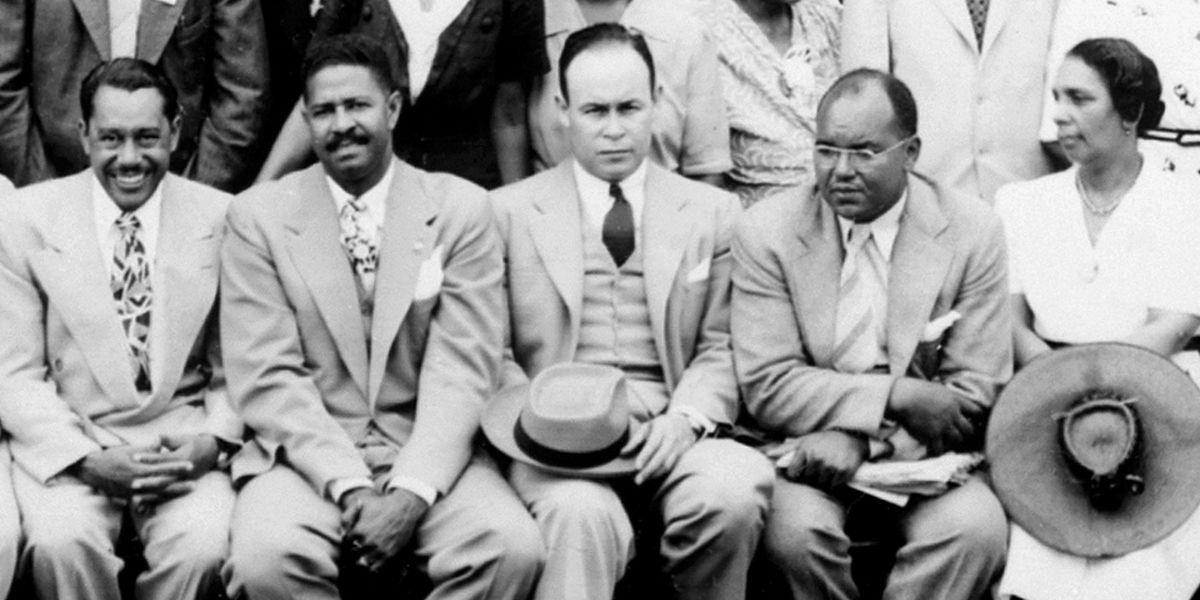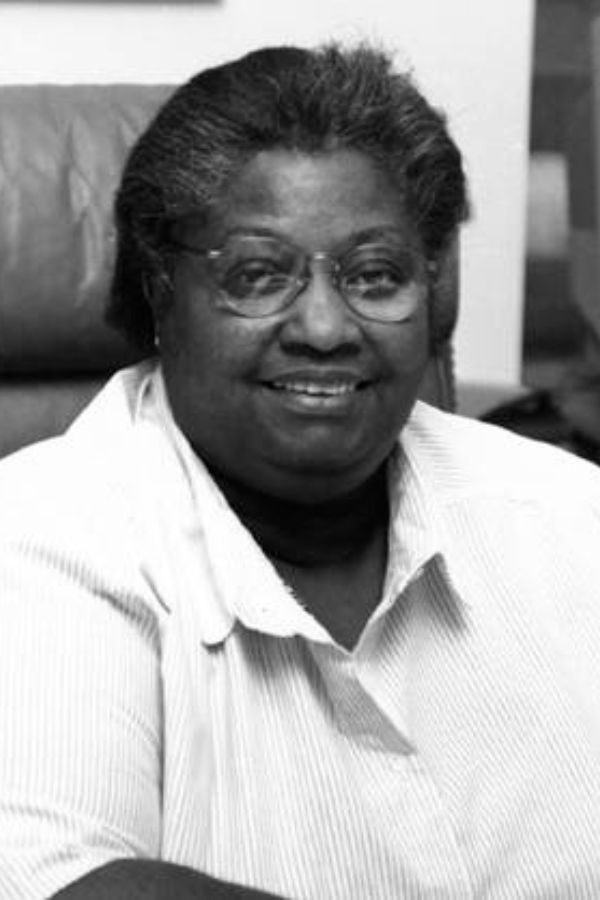Black scientists are responsible for groundbreaking discoveries and advocacy work that have improved health care globally. Many of their contributions, however, aren’t widely known and were even stolen, which has delayed their deserved recognition. The effort to erase their impact is rooted in interpersonal, institutional, and structural anti-Black racism. In honour of Black Histories and Futures Month, the BC Children’s Hospital Research Institute (BCCHR) celebrates the legacy of trailblazers that everyone should know. “Being aware of Black researchers’ historical accomplishments, in spite of the barriers that remain to this date, is instrumental to understanding the importance of equity programs,” says Oakley Ramprashad, manager of the Inclusion, Diversity, Equity, Allyship, and Anti-Oppression Office at BCCHR.

One of the most impactful scientific contributions comes from Alice Ball, a chemist from Seattle who was an expert in the chemical makeup of plants. In the 1900s, she revolutionized the available treatment for Hansen’s disease (also known as leprosy). The disease — which was brought to Hawaii by colonizers — was devastating Indigenous communities. The best treatment then was chaulmoogra oil, but it was too sticky to be used topically, too viscous to be injected, and too bitter to be ingested without inducing vomiting.
While pursuing her master’s degree at the College of Hawaii (now, University of Hawaii), Ball developed a method to separate the oil into fatty acid components of different molecular weights, creating water-soluble oil with therapeutic effect. She died at the age of 24 without publishing her findings, and her research was stolen by Dr. Arthur Dean, her advisor and eventual president of the university, and Richard Wrenshall, a chemistry professor. Dr. Dean published her findings as the “Dean Method.” It took over 50 years for Ball to receive her recognition. She’s considered one of the most influential women in Hawaiian history.
Another influential researcher was Dr. Sophia Jones, Canadian who wrote one of the first research papers in the medical field by a Black woman. Published in the 1910s, in The Annals of the American Academy of Political and Social Science, “Fifty Years of Negro Public Health” shed light on the impact of intergenerational trauma of enslavement and the health experiences of Black people. She advocated for equitable access to public health information to close the gap in health equity.
Dr. Jones completed her undergraduate degree at the University of Toronto in the 1870s, but was denied admission to medical school on the grounds of her gender and race. She moved to the US, and became the first Black woman to graduate from the University of Michigan Medical School. Dr. Jones was also the first Black Canadian woman to receive a medical degree and the first Black professor at Spelman College in Atlanta, where she founded their nursing program.

Mobile blood donation centres, which allowed for blood to be collected and refrigerated, were invented by Dr. Charles Drew, a surgeon and medical researcher from the US who studied medicine at McGill University. Considered one of the foremost experts in the preservation of blood for transfusions, he was appointed as director of the first American Red Cross Blood Bank in the 1940s. Dr. Drew’s research revealed that blood plasma storage could be prolonged through deliquification, the process of separating liquid blood from the cells.
During World War II, Great Britain and the US collaborated on a blood plasma program, which was led by Dr. Drew. He challenged a racist policy that excluded Black Americans’ blood. When the US Armed Forces agreed to accept Black donors but demanded their blood be stored separately, Dr. Drew resigned in protest. He spent the rest of his career as a surgeon at Freedmen’s Hospital and as a professor at Howard University.

In the 1990s, Dr. Alexa Canady’s research prompted the invention of a programmable anti-siphon shunt — a medical device that treats hydrocephalus, an abnormal buildup of fluid in the brain. When she was a high school student, an aptitude test revealed exceptional intelligence, but her grades were average. Her family found out that her teachers were attributing her scores to white classmates and giving her the white girls’ lower scores.
Dr. Canady grew up to become the first Black woman neurosurgeon in the US. She served as the chief of neurosurgery at the Children’s Hospital of Michigan from 1987 to 2001, and as a professor and researcher at Wayne State University. Dr. Canady specialized in congenital spinal abnormalities, trauma, and brain tumours. She’s now retired.
The groundwork for the mass production of corticosteroids and birth control pills was established by Dr. Percy Julian, a grandson of former enslaved people. In the 1940s, he began synthesizing sex hormones from plant sterols, isolated from soybean oil through a technique he had patented. Dr. Julian’s research helped increase the options to treat inflammatory conditions and reduce the cost of treating hormonal deficiencies. He published more than 50 scientific papers on the chemistry of plant alkaloids and sterols, and held more than 100 patents.
Fighting systemic oppression, he opened Julian Laboratories in the 1950s to battle larger producers of steroids, reduce prices of progesterone, and hire women and Black chemists. When Dr. Julian sold his lab, he became one of the first Black millionaires in the US, and devoted the rest of his life to his research institute. In 1973, he was inducted into the National Academy of Sciences, the first Black American chemist to achieve such an honour.
Dr. Marie Daly was the first scientist to identify a relationship between cholesterol, diet, and clogged arteries. Her research on aging showed evidence that smooth muscle hypertrophy played a role in the development of hypertension. Dr. Daly served as an investigator at the American Heart Association (AHA), looking at the effects of smoking on the lungs and hypertension. Her influential work with AHA was fundamental to understanding how heart attacks occur.
During her postdoctoral research, Dr. Daly examined the synthesis of cytoplasmic ribonucleoprotein, a complex of proteins. Her study was instrumental to guide Dr. James Watson and Dr. Francis Crick in the identification of the DNA structure. Her study showing that protein production requires RNA was cited by Dr. Watson in his acceptance speech of the Nobel Prize in 1962. Dr. Daly advocated for greater representation of marginalized identities in academia, and established a scholarship fund for Black science students. She was the first Black woman to receive a doctorate in chemistry in the US.

More recently, Dr. Kizzmekia Corbett, a viral immunologist from the US, was recognized for her groundbreaking work. Dr. Corbett is an assistant professor of immunology and infectious diseases at Harvard T.H. Chan School of Public Health and the Shutzer Assistant Professor at the Harvard Radcliffe Institute. Her expertise helped propel novel vaccine development for pandemic preparedness, including mRNA-1273, a leading vaccine against SARS-CoV-2. She also boasts a patent portfolio that includes universal coronavirus and influenza vaccine concepts and novel therapeutic antibodies.
In 2021, Dr. Corbett was named one of Time magazine’s “TIME100 Next.” In the article supporting her nomination, Dr. Anthony Fauci, former director of the National Institute of Allergy and Infectious Diseases in the US, said, “[Dr. Corbett] and her colleagues have been central to the development of the Moderna mRNA vaccine…her work will have a substantial impact on ending the worst respiratory-disease pandemic in more than 100 years.”
This is a small sample of the numerous Black researchers and scientists who have made an impact on medical history. The resources below can provide an opportunity to expand the understanding of medical and scientific history based on truth, and embrace an ongoing commitment to eradicating anti-Black racism beyond February.
Resources:
Black Man in A White Coat: A Doctor’s Reflections on Race and Medicine by Damon Tweedy
Canadian Doctors of Colour Offer a Frank Look at Racism in Medicine
Race, Health, and Happiness
Black Canadian Healthcare Professionals Association
Black Physicians of Canada
Canadian Black Scientists Network
Interdisciplinary Centre for Black Health
Hogan’s Alley Society




